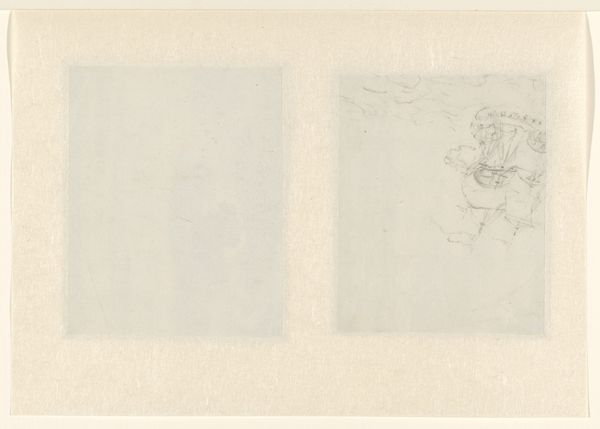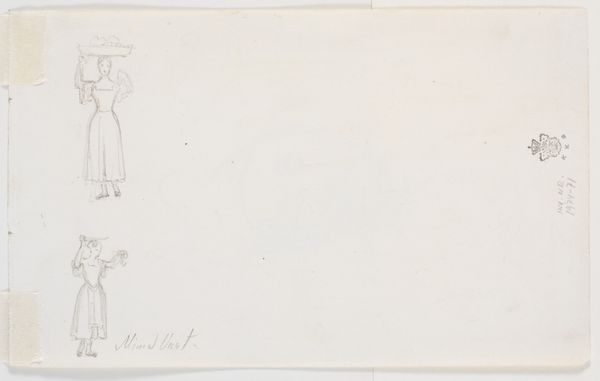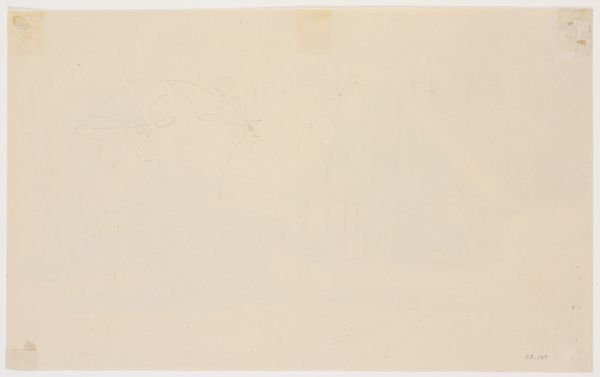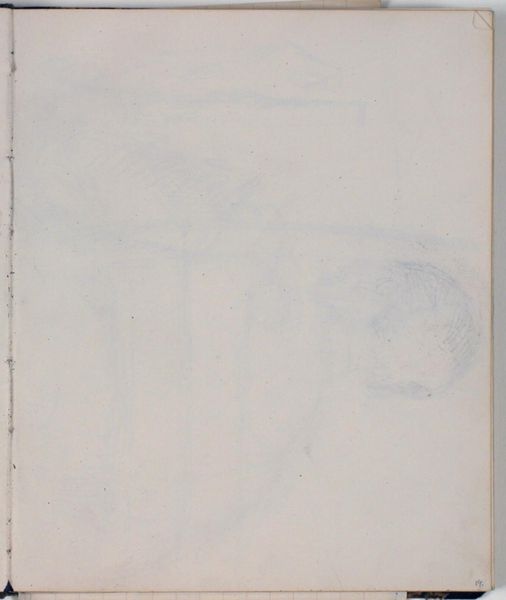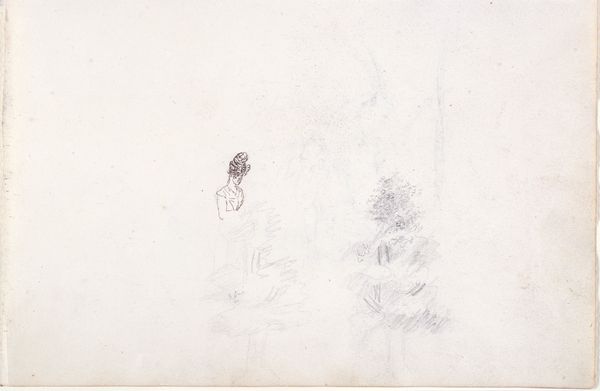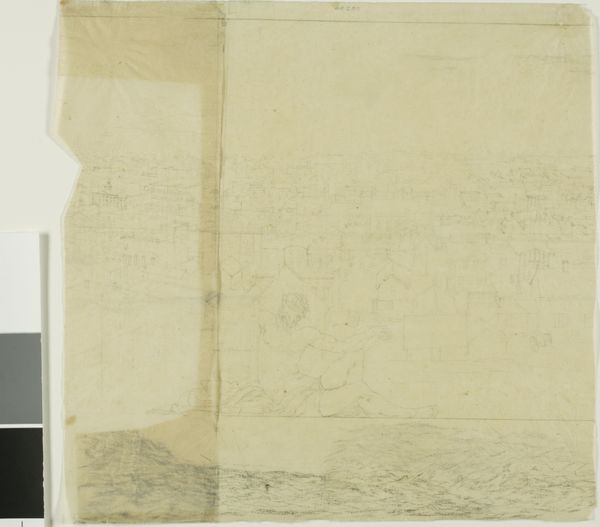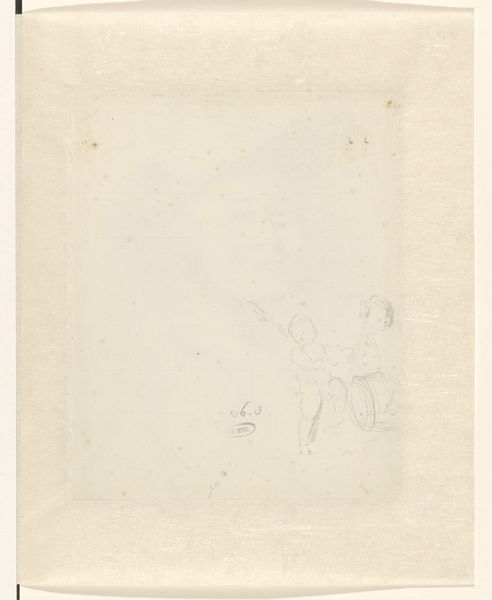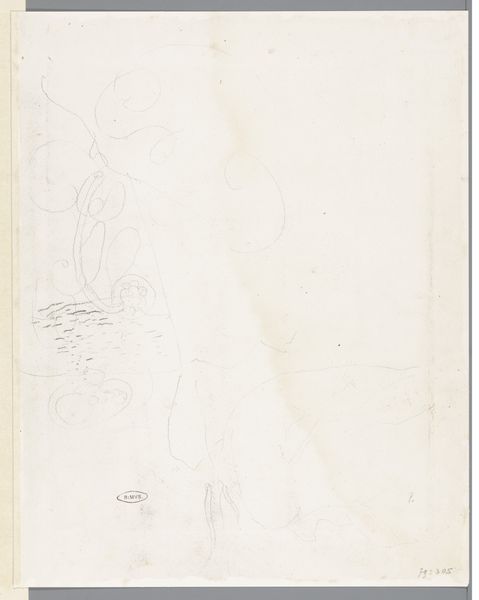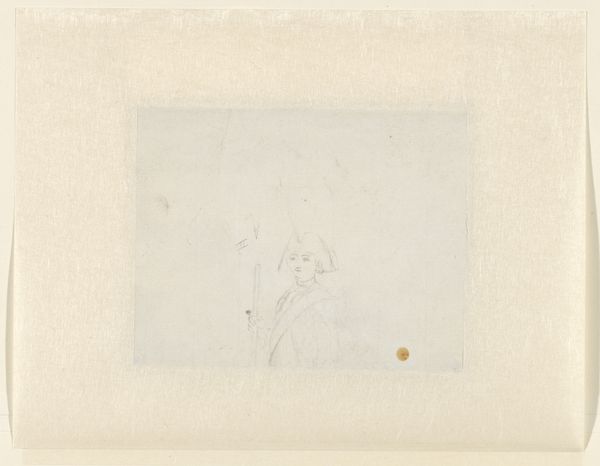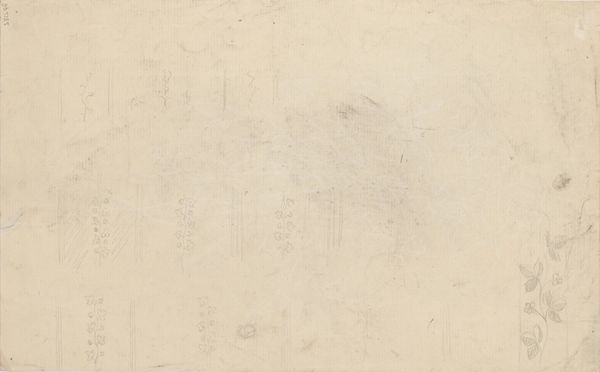
drawing, paper, pencil
#
drawing
#
water colours
#
landscape
#
figuration
#
paper
#
pencil
#
line
#
realism
Copyright: Public Domain
Curator: Here we have Ferdinand Hodler's "Mower on the Field," a drawing executed around 1909 and now held at the Städel Museum. The piece is rendered with pencil and watercolor on paper. Editor: It has such an ethereal quality. Almost ghostly. The figure of the mower barely emerges from the ground, a fleeting image traced in pale blue lines. Curator: Precisely. Hodler’s line work is key. Notice how the figure is defined not so much by contour as by repeated strokes, suggesting movement, but also the sheer labor involved in the action. It is this linear structure that conveys much of the work’s aesthetic effect. Editor: I see that labor quite literally. Hodler captures the raw physical action. The slight bending of the worker, the length of the tool and the earthiness of it. You can almost feel the worker’s fatigue etched into those delicate lines. I wonder what that kind of job meant at the time and how it relates to the pastoral aesthetic movements going on around then? Curator: An astute observation. Hodler frequently dealt with the themes of labor and nature, not in idealised form, but rather the intersection of both. One could certainly posit Hodler’s work here operates under the lineage of realism while subtly negotiating symbolist concerns. Editor: It makes me wonder about the paper itself, the surface that accepts these lines. What kind of paper would it have been? Where did he acquire it? What were the qualities he sought? You know the materials and method say so much about its context. Curator: Hodler likely chose this specific type of paper for its absorbency with watercolour allowing the lines to softly diffuse rather than starkly contrast. In doing so, a balanced pictorial structure comes to the fore; this isn’t simply a scene, it’s a compositional arrangement. Editor: Thinking about the production, the actual 'making' helps to dismantle art historical hierarchies a bit. I mean where would you draw the line here between, 'high' art and simple 'craft' practices? Curator: Ultimately it's in its effect, is it not? Through the barest of means, line and color, Hodler invokes this tension between man, nature and toil. A compelling composition achieved economically, wouldn't you agree? Editor: It certainly leaves you pondering not only Hodler's technique, but the labour, materials, and the context from which it arose. A complex network laid bare with such few markings.
Comments
No comments
Be the first to comment and join the conversation on the ultimate creative platform.


